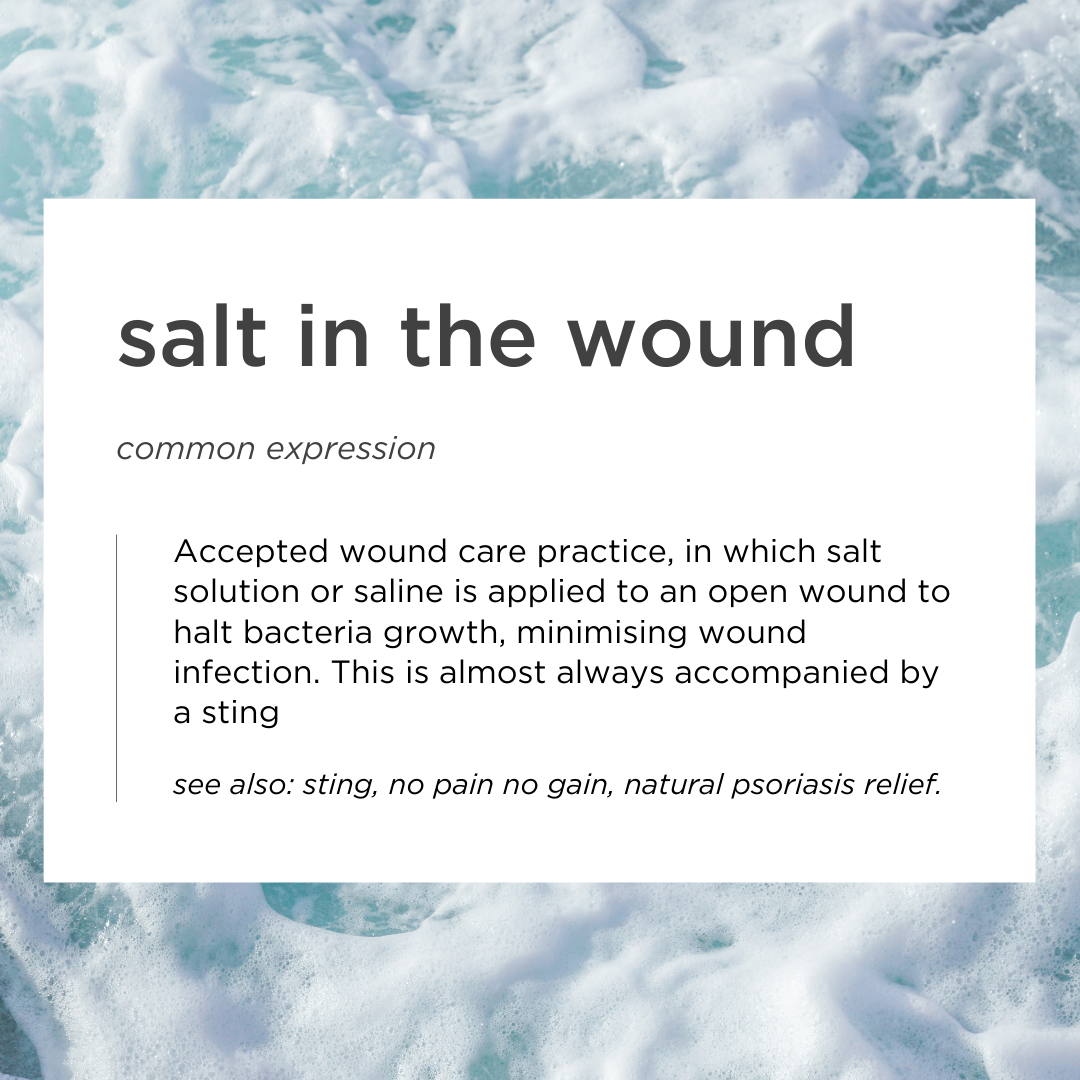Psoriasis: The Road to Healing
The skin is the largest organ in the body. While it has many functions including temperature regulation, control of fluid balance, and sensation, it is our first line of defence against infection.
For suffers of the chronic condition psoriasis, this line of defence is compromised. Psoriasis is an autoimmune disorder, where the skin cells proliferate at an abnormal rate, causing the formation of lesions or plaques on the skin. The immune system then infiltrates the skin, releasing chemicals which cause inflammation, redness, and itchiness. The temptation to scratch, while it may provide temporary relief, breaks the protective layer, leaving the skin susceptible to bacterial growth. Bacterial growth leads to more inflammation… and so the cycle continues.
Salt in the Wound
Ever been in the ocean with an open wound? Let me tell you… IT STINGS! The concentration of salt in the ocean is approximately 3.5% - about 120 million tonnes. Saline (or sterile salt) is commonly used in wound care as it creates conditions that make it difficult for bacteria to grow, therefore preventing wound infection. Successful wound healing occurs when you reduce wound contamination and minimise tissue injury.
Nociceptors (or nerves which sense pain) located in the skin are more exposed to the environment in the bed of an open wound, and any stimulus applied will elicit a pain response. For example running water over a burn HURTS! Salt draws water out of the tissues in a process called osmosis- causing a ‘drying’ effect. When the salt concentration is high enough, salt kills bacteria through effectively sucking the water out of the cell.


